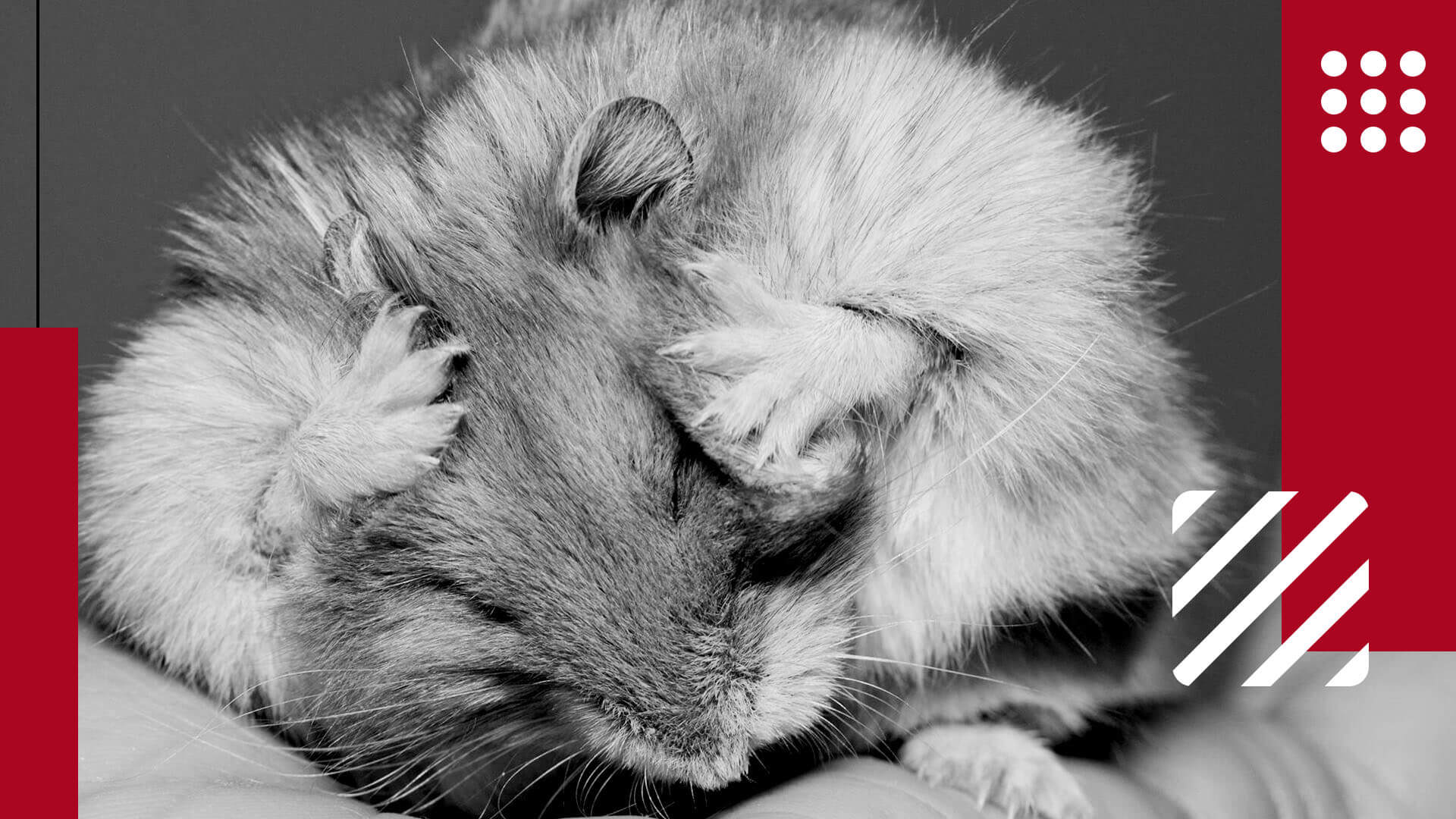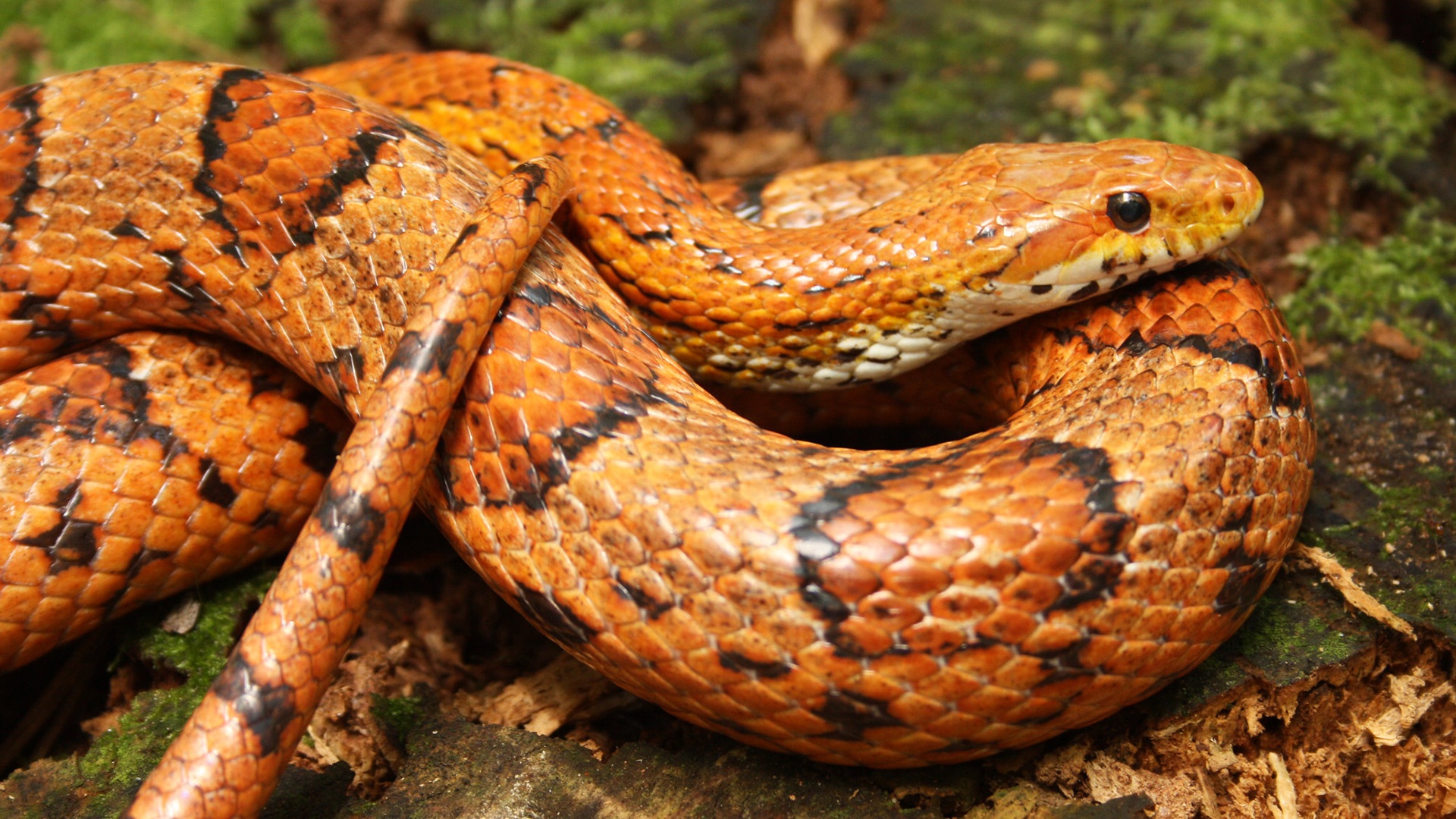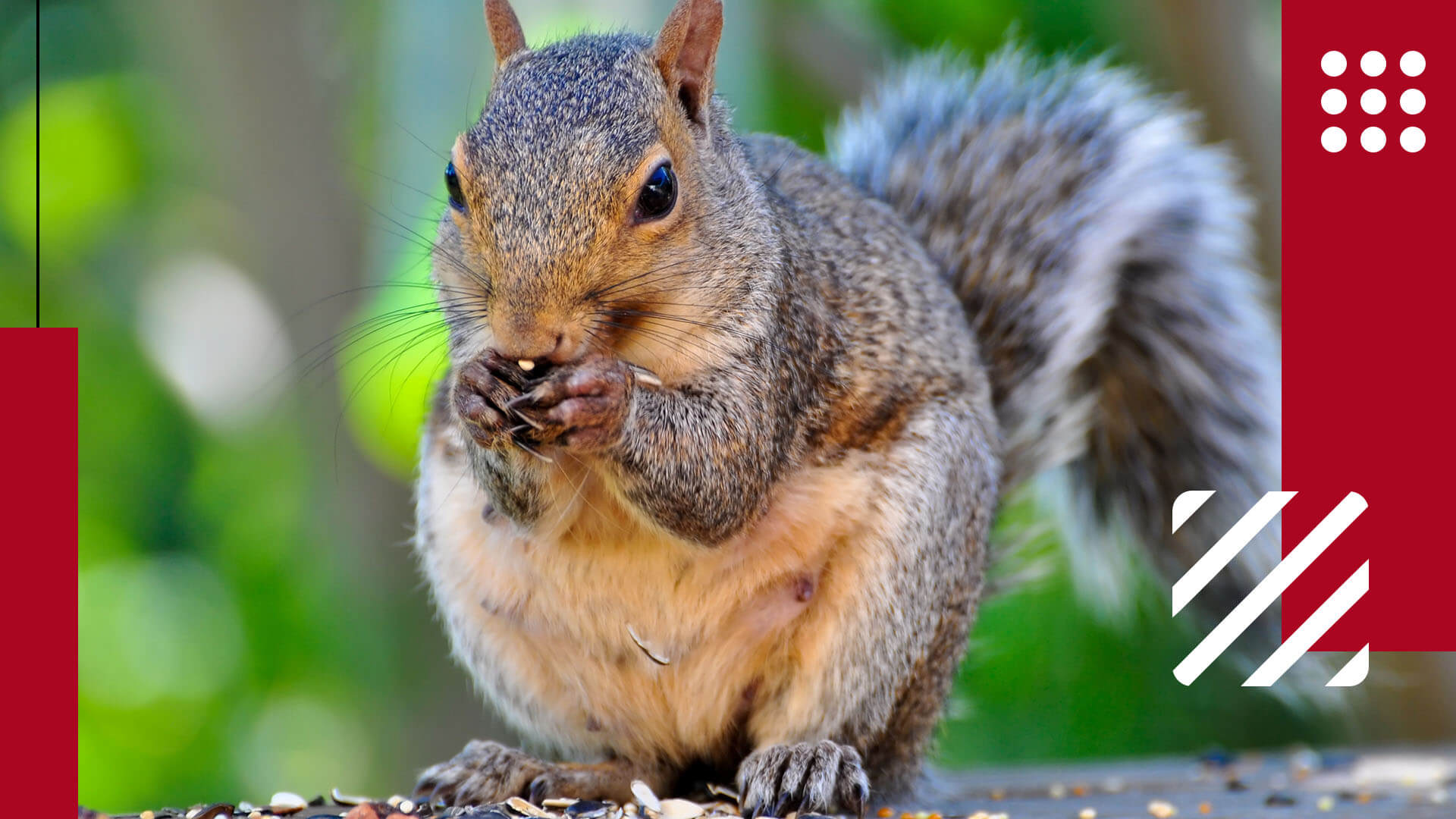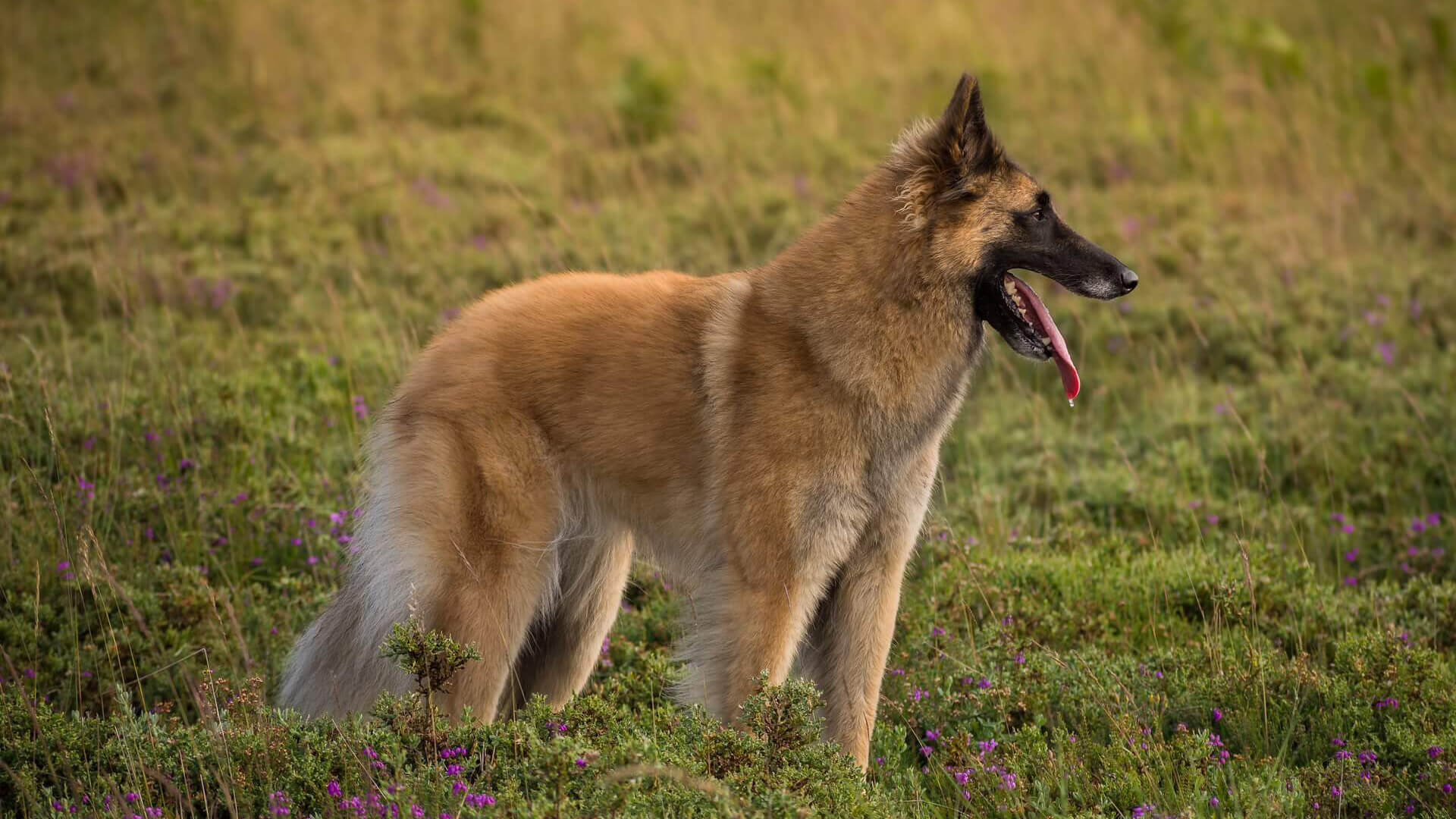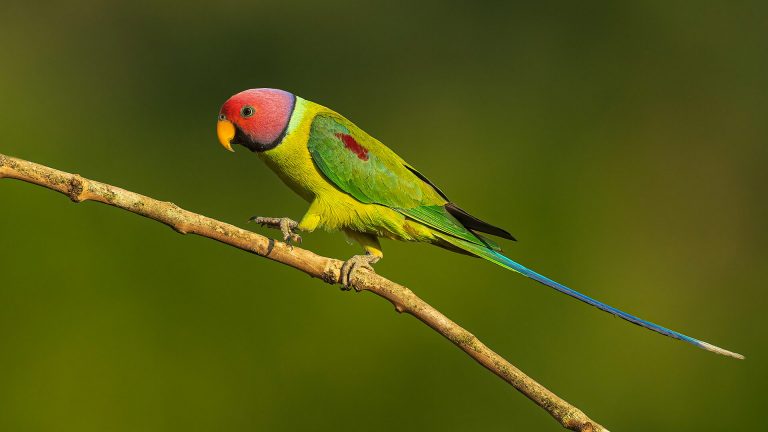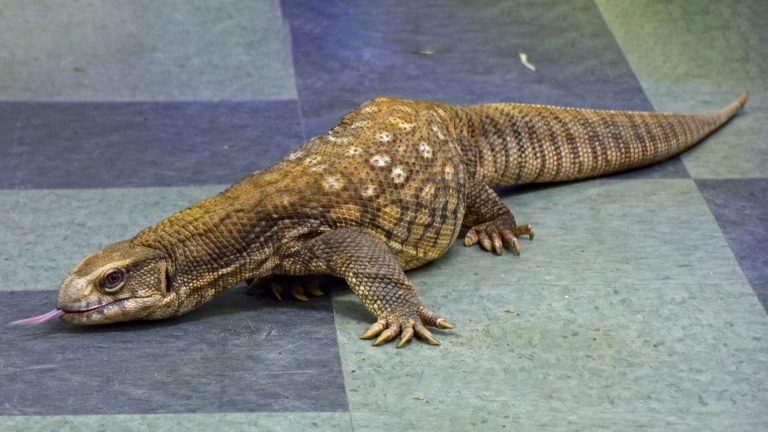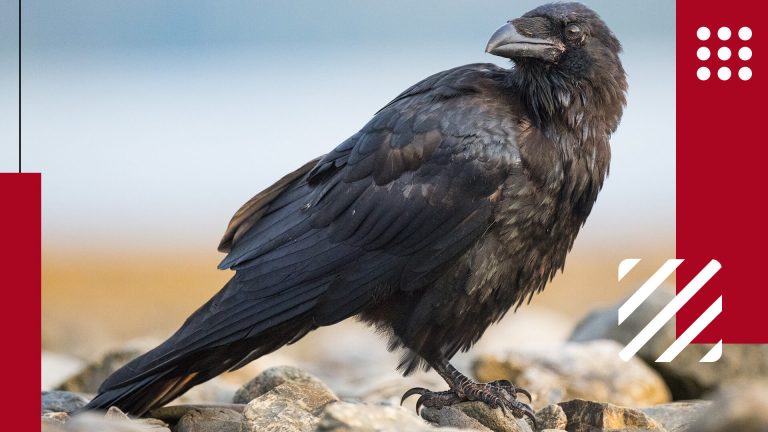Many of you will wonder what is a Potoo bird? The Potoo bird or Great Potoo also called Common Potoo or Ghost Bird is not confined to a single species but is any of seven species of birds in the family Nyctibiidae genus Nyctibius. They are also called "Poor-me-ones" because of their wailing haunting calls. They are part of the local folklore. There is a tale that the sound is that of a lost child calling for the mother.
There are many superstitions like disaster happening to those who hear it attached to the call by humans. The call of the Potoo bird resembles the sound of wails, moans, and groans among humans. The call of the Potoo bird gives creepiness in the stillness of night emitting through the dark forest. They are heard rather than seen. These birds are related to frogmouths and nightjars.
The birds exist in tropical Central and South America. These birds are spotted in Mexico, Guatemala, and further south as Brazil. The habitat is dense lowland forest, woodlands, and meadows. There is geographical variation in size and plumage.
Distinctive Features of Potoo Bird
| Scientific name | Family Nyctibiidae |
| Lifespan | 12-14 years |
| Color | Gray or brown feathers with mottled patterns |
| Size (inches) | 14-20 inches |
| Height | 13-16 inches |
| Weight | 8-13 ounces |
| Health risk | Low |
| Unique trait | Camouflages itself by standing motionless on a branch |
| Famous for | Distinctive haunting calls |
| Temperament | Shy and elusive, avoids human contact |
| Maintenance | Low |
| Adaptability | Low; require specific habitat requirements and diet |
| Behavior | Not recommended as pets due to its shy behavior |
| Personality | Nocturnal and solitary |
| Social | Lives alone or in pairs |
| Domesticated | Not commonly domesticated |
The seven species of Potoo birds have similar general features as well as behaviors but differ in inconspicuous and conspicuous ways. The appearance is not the feature that makes the species stand apart from each other. The color variation is maybe a shade lighter with white and grey feathers dominating above darker ones. This is not applicable to Common Potoos birds. The breeds are:
- Great Potoo, the biggest breed among the species.
- Rufous Potoo, a tiny, brown-coloured bird.
- White-winged Potoo, a Potoo acknowledged for its white wings.
- Long-tailed Potoo has extra-long tail feathers.
- Common Potoo, the most assorted and well-populated Potoo, it has two sub-species.
- Andean Potoo, a strange bird that resides in the mountains.
- Northern Potoo, a distinctive variety of Potoo that lives further north than others. It has two sub-species and several subspecies under it. In totality, it is five species.
Great Potoo among all the species is the largest and palest in color and has whitish plumage.
It is an educated guess that the bird lives for 12-14 years. This guess is based on the longevity of similar species. Different aspects of the bird’s life are still unknown. Potoo bird encounters several threats in the wild from weasels, falcons, monkeys, etc.
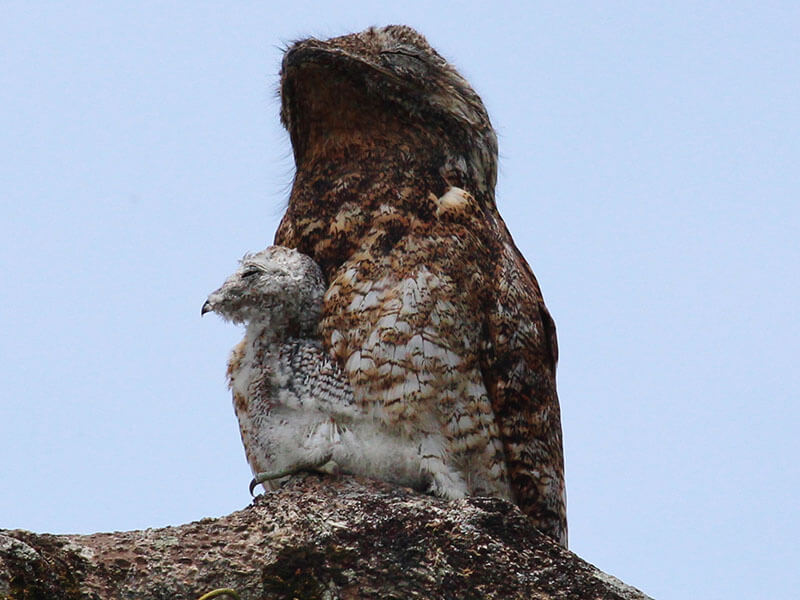
Appearance
Potoo bird is 14-20 inches in length. The head is large and rounded. Bill is broad and a little hooked at the end. Potoo bird has the bug—yellow eyes along with jutting out pupils and broad mouth. The wings and tail are long. The feather of the Potoo bird is complicated styled grey, black, and brown merging with the tree bark.
The upper eyelids of the Potoo bird have many tiny folds which create slits. They can see with their eyes closed. It is unknown if the slit has the full vision or it gives a general warning as the lights and shadows change. This transformation permits the bird to keep a watch on potential threats as it sits still during daytime with its eyes closed. The daytime is their sleeping time.
The ornithologists are perplexed by these evasive private habit birds. Different Potoo species co-exist in the same region. This is the main reason why ornithologists find it difficult to collect data on these birds. The different Potoo species look alike, hunt in a similar way, and habitat is the same. It is impossible to demarcate them and bring out the difference.
Personality
Potoo birds perch vertically on dead branches as they sleep, and it is where they roost. They remain completely still for long periods. It is mostly 10 to 12 m above the ground. Dusk is their waking time. At this time, it lowers itself to a height of 1.5 to 2 m above the ground. They can spot their prey in the dark. The prey is caught by fast short and silent flights. After capturing the prey, it returns to the same branch. In the eventuality of danger, the bird freezes and it becomes even more difficult to notice it.
The nest-making habit is restrained. Potoo bird is very sedentary in the habit and they are seen trying to stowaway on ships. The flight is done through deep wing beats. Long wings and tails permit them high maneuverability when in flight.
Mating
Potoo bird lives as monogamous pair during mating season. For Great Potoo, the breeding season falls between February and August. If this courtship lasts for a lifetime is not known. They reproduce once a year. It is difficult to differentiate males from females as they look similar. A branch or stub is selected which has enough depression or crevice to lay a single egg. The color of the egg is chalky white conspicuous with grey and white color. Both parents incubate the egg for 30-35 days. The baby bird is tiny and covered in fuzz.
The baby Potoo bird is sheltered by parents till it achieves plumage of white and brown speckled color and learns to fly. The feathers begin to appear after two weeks. Both parents feed the chick. Chick is fed through regurgitation for the first days. The nestling phase is for two months. The chick fledges in about 47-50 days after hatching. By this time, it learns to acquire the still posture of adults.
Diet
The Potoo bird is an insectivore by nature. The primary prey is large insects, katydids, beetles’ grasshoppers, termites, and locusts. Potoo birds can spot moths and other flying insects in the dark. They can even devour birds like bats occasionally. They swallow the prey at the place of the hunt. In case of a large kill, they carry it back to the nest. The Potoo bird has storage possibility in the body when they cannot hunt on moonless nights or are incubating the eggs for a long duration. It is biologically possible for them to survive for a short duration without food.
Is Potoo Bird-Friendly?
Potoo bird is not violent and aggressive. Even if you happen to be near the nest the birds are not likely to attack. Those Potoo birds that live in zoos and wildlife centers accept humans giving them food and medicine but detest being handled too much. They like to be on their own. These birds will not give you the pleasure of sitting on your figure and chirp. They do not engage with situations they find risky but freeze. They are solitary birds.
Is Potoo Bird Endangered?
It is suspected that the population of Potoo birds is on the decline because of habitat loss. This is not happening fast and so the concern is not immediate. The exact figure is not available. The International Union for the Conservation of Nature has specified many Potoo species as least concerned with regards to extinction. These are Rufous Potoo, Long-tailed Potoo, Andean Potoo, white-winged Potoo, Common Potoo, Great Potoo, and Northern Potoo. The range of these birds is huge but its population is not growing; this makes the species vulnerable to extinction.
What to Know Before Keeping a Pet Potoo?
If you are considering keeping a Potoo as a pet, it is important to understand the care requirements and responsibilities that come with owning such an exotic bird. Here are some tips on how to take care of a pet Potoo:
Housing For Pet Potoo
Potoos are relatively small birds and do not require a lot of space. However, they do need a tall cage as they prefer to perch up high. The cage should be at least 3 feet tall and 2 feet wide. It is important to provide plenty of branches and perches for the Potoo to climb on and feel secure. The cage should also have a solid floor and be lined with newspaper or other absorbent materials.
Diet For Pet Potoo
Potoos are insectivores and require a diet consisting mainly of insects, such as crickets, mealworms, and moths. These insects can be found at most pet stores. It is important to provide a variety of insects to ensure that the Potoo receives all of the necessary nutrients. They should also have access to fresh water at all times.
Lighting
Potoos are nocturnal and do not require any special lighting. However, they do need a dark environment to rest and sleep during the day. It is recommended to cover their cage with a blanket or sheet during the daytime hours.
Socialization
Potoos are solitary birds and do not require socialization with other birds or humans. They are not typically hand-tamed and should be left alone to avoid stress and anxiety.
Veterinary Care
It is important to find a veterinarian who specializes in exotic birds for regular checkups and any necessary medical care. Potoos can be prone to certain health issues, such as respiratory infections and feather plucking, so it is important to monitor their health and behavior closely.
Legal Considerations
It is important to research and understand the laws and regulations in your area regarding keeping Potoos as pets. In some places, it may be illegal to keep these birds as pets without a special permit.
What People Are Reading:
Frequently Asked Questions About Potoo
Some of the generally asked questions about potoo are answered below:
How big is the Potoo bird?
The Great Potoo is the largest among all Potoo species. It is 48-60 cm long and 360-650 g in weight. Typically, Potoo's size is 21-58 cm long.
Can you own a Potoo bird?
Potoos are meant to live in nature. They come under exotic varieties. It is illegal in most countries to keep them as a pet. The laws govern their ownership. In most places, a license is needed as well as a suitable place for the bird to live. A professional vet close to your place is also an important necessity. Health scares and injuries should be taken care of. Moreover, it is difficult to feed the Potoo on live insects.
Those Potoos who have been brought up as babies display different personalities. They are playful as well as mischievous. It is advisable to get the bird from legal adoption centers. Here the rescued injured birds from the wild are cared for. These centers give Adoption certificates and regular updates about the progress of the bird.
How do Potoos protect themselves from predators?
Potoos have excellent camouflage and can blend in with their surroundings, making them difficult for predators to spot. They also have a behavior known as "stumping," where they stretch their necks and bodies upward, resembling a broken tree branch, to further blend in with their environment.
Do Potoos make any sounds?
Yes, potoos make a variety of vocalizations, including hoots, whistles, and growls. They also have a distinctive call that sounds like a low-pitched, mournful whistle.

